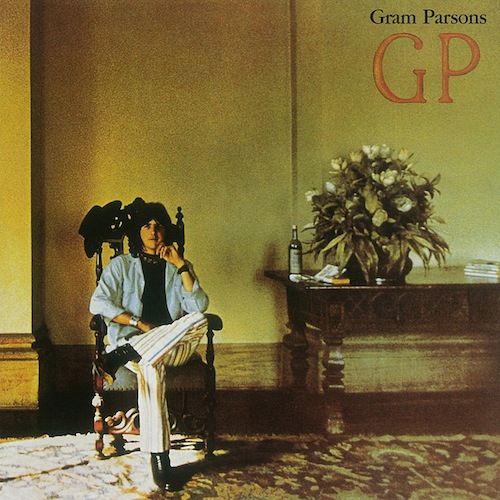Appreciating the mystery in Gram Parsons' 'She'
By NICK TAVARES
STATIC and FEEDBACK Editor
It rings so clearly in my headphones, with the voices up front and the backing subtle but pronounced holding everything together in place. And it sounds like it could have come from anywhere and nowhere at once.
Gram Parsons’ “She,” from his first solo record GP, is a perfect little nugget from an all-too-brief career, a moving little piece of Americana that confuses me a little more every time I listen to it and feels a little more worn-in and comfortable every time. Every time I try to unravel a little more of the mystery of this song, I find myself deeper in confusion. And it all helps the song.
I can’t tell when “She” takes place. It could be the post-Civil War Reconstruction, it could be the Depression, it could be the 1970s. It wasn’t intended this way, but it could be now. It exists in this flexible plane that gives it so much of its power. Somewhere down South, under the Delta sun, she and he and they living and making choices and singing their way through life.
It’s not really clear what the song is about, which is something of a common trait in Parson’s work. He had a knack for creating these haunting little vignettes that could carry more significance than the average three-minute tune, without becoming bogged down in the details. There’s one little slice of this Southern scene in “She” that always sticks out, a devastatingly human moment that can pull out any image from any timeframe:
“They used to walk singing songs by the river
Even when she knew for sure she had to go away.”
There’s no mention of where they are, how old they are, where she’s going, what they’re singing. It’s abstract and yet absurdly complete, a fully detailed moment without a single specificity. It’s one piece of a song that has been in my head for years, and fittingly, I can’t remember how I first heard it.
I have a stupidly thorough memory for the mundane details in my life. For no reason other than the recesses of my brain have retained more information than it should, I can tell you which desk I was sitting in during eighth grade when I learned from a friend that the Red Sox had called up Tim Wakefield. I remember walking into a Best Buy on a summer day in 2001 to buy a copy of Neil Young’s Tonight’s the Night, picking it up off the shelf, walking back to the register, walking out and immediately popping it into the discman plugged into my car’s stereo via a cassette adapter. There are more those moments, important and otherwise, but all these weird little scenes wind up tied to the paraphernalia that clutter up life.
And it hit me that I have no memory of buying the GP/Grievous Angel CD. I’m sure I bought it and didn’t get it as a gift, and I’d put the point of entry somewhere in the early 2000s. But at some point I made the conscious decision that I needed this in my life, with my only reference likely being a pair of Ryan Adams covers — his version of “Return of the Grievous Angel” with Emmylou Harris, and Whiskeytown’s take on “A Song For You.”
GP/Grievous Angel was then, and could still be now, the twangiest entry into my collection, and it took some time to get over that. Those surface-level dismissals can be the hardest to move past — the sound of someone’s voice not being immediately appealing, or the tone of a guitar not being exactly right. But part of listening maturity comes with the acknowledgement that, maybe, there’s something worthwhile beyond the comfort zone. Not everything is Jimi Hendrix at the Fillmore East, and maybe it’s worth exploring.
And of course Gram Parsons’ work is worth exploring. The common quality in all his songs is revealed in the seemingly insignificant portraits of America he painted, through characters and scenes and stories. They all exist in this timeless space, floating around heartbroken and resigned, offering lessons and warnings and hope. A song like “She” sounds like it was transcribed out of the air rather than written, as if it had always been there. Even the recording itself sounds at once aged and contemporary, tracked in a warm room that still vibrates with a modern resonance.
I don’t remember when I first heard it, or how I heard it. I don’t know where I was, how old I was, what I was doing or how it first moved me. It’s just always been there. It’s like it always has been.
April 15, 2015
Email Nick Tavares at nick@staticandfeedback.com


